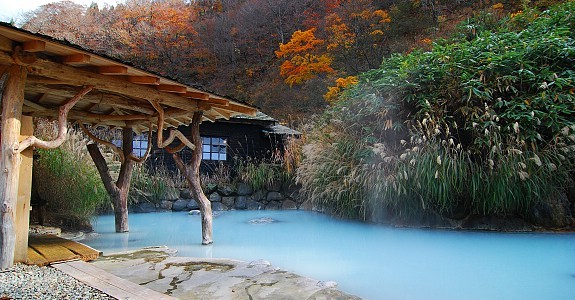Japan is a country which sees a great deal of volcanic activity. This being the case, there are also a lot of hot springs that have cropped up around the countryside, giving to rise to the concept of Onsen. Onsen, singular and plural, are bathing places that are based on hot springs.
Onsen bathing is a variant of the sento baths; however, the distinction is very clear: Sento baths are communal bathing places that use heated water, while the water in onsen bathing places must be of volcanic origin, even if the water has to be reheated for the bath.
Onsen baths, like sento baths, were used to equalize the people in Japan, where traditionally the society had an extremely rigid, defined hierarchy. In addition to this, the onsen baths were considered to cure ailments because of the different minerals that are present in the water. In fact, waters that have different mineral contents are separated into different bathing places.
Initially, onsen attracted mainly domestic traffic, but of late it has started receiving international fame due to the relaxing nature and the healing properties that are associated with the waters. Although recently there has been a controversial ban in some onsen areas based on race and only Japanese have been allowed to enter.
There are a few famous onsen in Japan, with most of them in Hokkaido, since the area has a high concentration of volcanoes. Some of these resorts are Toya, Noboribetsu and Yunokawa. Additionally, Aomori is considered to be heaven for the true onsen lovers, with its high volcanic activity. Aomori is situated in the mountains and has every imaginable sort of onsen available.
The Hakodate Yunokawa hot springs is one of the oldest onsen in Hokkaido, dating back to more than 300 years. It is easily accessible by air through the Chitose airport. The facilities provided are comfortable and luxurious, ensuring pleasurable experience all around.
Advanced booking at any of the more famous onsen is a sensible course of action to follow, although the smaller ones will accommodate walk-in visitors.
Paul Symonds writes about Japenese Onsen & Sauna and Teaching in South Korea
Article Source: http://EzineArticles.com/?expert=Paul_Symonds
http://EzineArticles.com/?A-Guide-to-Japanese-Onsen&id=1248867



No comments:
Post a Comment